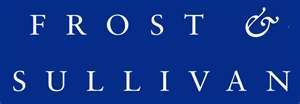Light Vehicle Sales in Selected Eastern European and Central Asian Countries to Exceed 1 Million by 2021
 |
Azerbaijan, Belarus, Kazakhstan, Kyrgyzstan, Tajikistan, Turkmenistan, Ukraine, and Uzbekistan will transition from a used vehicle to a new vehicle market, finds Frost & Sullivan
LONDON -- April 28, 2015: Original equipment manufacturers (OEMs) in the automotive industry across the globe are turning their attention to what they consider the next frontier in their quest for market dominance – selected Eastern Europe and Central Asian countries. General Motors, Renault-Nissan, Hyundai, Volkswagen and Toyota are racing to tap into the region's vast potential, and are expected to account for over 50 percent of light vehicle (LV) sale volumes.
New analysis from Frost & Sullivan, Strategic Analysis of the Automotive Industry in -Stan and -Jan Countries, which covers Kazakhstan, Ukraine, Uzbekistan, Azerbaijan, Belarus, Turkmenistan, Tajikistan and Kyrgyzstan, finds that annual LV sales volume in these countries is projected to cross one million units post-2021. Kazakhstan, Uzbekistan, Ukraine and Azerbaijan will remain the top markets for automotive investment, contributing an estimated 93 percent to regional LV sales in 2021.
For complimentary access to more information on this research, please visit: Report.
"Economic growth and sound governmental policies will aid the transition of the -Stan and -Jan region from a used car market to a new car market," said Frost & Sullivan Automotive and Transportation Consulting Analyst Anna Ozdelen. "Significant state support will attract investments in LV production as well as local auto component manufacturing, thus steering the region's automotive industry forward."
Unfortunately, sales and production growth is likely to slow down over the next couple of years. Falling oil prices and depreciation of the Russian rouble may result in currency devaluation and decrease the purchasing power of the public, thereby slowing down regional LV sales and production. Manufacturing OEMs are expected to respond by increasing the levels of manufacturing localisation.
Locally manufactured vehicles will be more affordable and will experience lower currency-related price fluctuations. Kazakhstan, in particular, will evolve into a production hub as overall localisation in the country is set to rise from 30 percent to 50 percent by 2018.
"Foreign OEMs will increasingly rely on joint ventures with state organisations to penetrate regional markets," noted Ozdelen. "As the regional economy recovers, higher incomes, burgeoning population, low vehicle density as well as the need to replace old vehicle fleets will drive further organic growth in the -Stan and -Jan automotive industry."
Strategic Analysis of the Automotive Industry in -Stan and -Jan Countries is a Strategic Insight that is part of the Automotive & Transportation (Frost Automotive) Growth Partnership Service program. The study analyses and forecasts the potential for automotive sales in the -Stan and -Jan region. The study also examines the production and sales of passenger cars and light commercial vehicles up to five tons, providing insights on top manufacturers in each country, the top markets for investment, as well as geopolitical factors that have had and may continue to have an effect on individual countries and the region as a whole.
New Mobility Business Models and the Future of Mobility Trends are two of the current trends in the automotive and mobility space, which will be discussed during Frost & Sullivan's annual industry event "Intelligent Mobility: Future Business Models in Connected and Automated Mobility" (Mobility Trends), taking place at the House of Lords and the Royal Garden Hotel in London on 1st and 2nd July 2015.


